Skip to main contentProvenanceThe artist
Margo Pollins Schab, Inc., New York, New York
Terra Foundation for the Arts Collection, Chicago, Illinois, 1995
Exhibition HistoryPublished References
Charles Burchfield
(American, 1893–1967)
Crows in March
1951
Lithograph on off-white wove paper
Image: 13 5/8 x 9 3/4 in. (34.6 x 24.8 cm)
Sheet: 15 7/8 x 11 15/16 in. (40.3 x 30.3 cm)
Mat: 20 x 16 in. (50.8 x 40.6 cm)
Sheet: 15 7/8 x 11 15/16 in. (40.3 x 30.3 cm)
Mat: 20 x 16 in. (50.8 x 40.6 cm)
Credit LineTerra Foundation for American Art, Daniel J. Terra Collection
Object number1995.26
SignedIn graphite, lower right (beneath image): Charles E. Burchfield
InterpretationCharles Burchfield's lithograph Crows in March exemplifies the artist's impassioned embrace of nature in its evocation of a dreary early spring landscape. Rendered with a characteristically exaggerated line, the stylized trees rise among mossy hillocks saturated with the run-off of melting snow. A cartoon-like crow, its beak open to suggest the harsh sound of its call, sweeps through the clearing as more of the ominous black birds, mere curving silhouettes against the sky, rise in the background. The jagged zig-zag lines and shapes reverberating throughout the composition provide a visual counterpart to their noisy cawing, suggesting its echoing effect in the empty landscape.
A prolific watercolorist, Charles Burchfield keenly observed seasonal changes in western New York, where he resided beginning in 1922. He based Crows in March on his 1949 watercolor entitled Clatter of Crows in a Spring Wood (private collection), a visual response to a memorable encounter with nature in the small town of Gowanda, near Buffalo. He recorded: "Walking along through a woods in early spring hoping to find the first wildflower; all in quiet, except for the low murmur of a tumbling rill….Suddenly without warning a terrific clatter shatters the silence - a flock of crows has seen the intruder. As they angrily fly away, a cacophonous medley of sound fills the whole woods. One of the most thrilling events of nature." Throughout the artist's life, the natural world inspired intense emotional experiences of this kind, which Burchfield captured in watercolors vibrating with passionate energy, such as his late Dream of a Fantasy Flower (TF 1999.23).
Burchfield made fifteen prints, including only three lithographs, in the course of his career. Made with the assistance of master printmaker George C. Miller (1894–1965), the lithographs were prompted by a commission in 1950 from the Cleveland Print Club. From them the Club selected Summer Benediction, showing a flowery meadow, rather than this more ominous image. Translating the watercolor into the stark monochromatic tones of the lithograph added an element of foreboding to the desolate scene of startled crows, undulating clouds, spiky branches, and fallen trees.
A prolific watercolorist, Charles Burchfield keenly observed seasonal changes in western New York, where he resided beginning in 1922. He based Crows in March on his 1949 watercolor entitled Clatter of Crows in a Spring Wood (private collection), a visual response to a memorable encounter with nature in the small town of Gowanda, near Buffalo. He recorded: "Walking along through a woods in early spring hoping to find the first wildflower; all in quiet, except for the low murmur of a tumbling rill….Suddenly without warning a terrific clatter shatters the silence - a flock of crows has seen the intruder. As they angrily fly away, a cacophonous medley of sound fills the whole woods. One of the most thrilling events of nature." Throughout the artist's life, the natural world inspired intense emotional experiences of this kind, which Burchfield captured in watercolors vibrating with passionate energy, such as his late Dream of a Fantasy Flower (TF 1999.23).
Burchfield made fifteen prints, including only three lithographs, in the course of his career. Made with the assistance of master printmaker George C. Miller (1894–1965), the lithographs were prompted by a commission in 1950 from the Cleveland Print Club. From them the Club selected Summer Benediction, showing a flowery meadow, rather than this more ominous image. Translating the watercolor into the stark monochromatic tones of the lithograph added an element of foreboding to the desolate scene of startled crows, undulating clouds, spiky branches, and fallen trees.
Margo Pollins Schab, Inc., New York, New York
Terra Foundation for the Arts Collection, Chicago, Illinois, 1995
Exhibition History
Collection Cameo companion piece, Terra Museum of American Art, Chicago, Illinois, May 1997.
Manifest Destiny, Manifest Responsibility: Environmentalism and the Art of the American Landscape. Terra Foundation for American Art, Chicago, Illinois and Loyola University Museum of Art, Chicago, Illinois (organizers). Venue: Loyola University Museum of Art, May 17–August 10, 2008. [exh. cat.]
Manifest Destiny, Manifest Responsibility: Environmentalism and the Art of the American Landscape. Terra Foundation for American Art, Chicago, Illinois and Loyola University Museum of Art, Chicago, Illinois (organizers). Venue: Loyola University Museum of Art, May 17–August 10, 2008. [exh. cat.]
Prasse, Leona E. and Louis Richards. The Drawings of Charles Burchfield: Catalogue of an Exhibition Sponsored by the Print Club of Cleveland and the Cleveland Museum of Art. (exh. cat., Cleveland Museum of Art). Cleveland, Ohio: Cleveland Museum of Art, 1953. No. 192, p. 31.
Czestochowski, Joseph S. "The Published Prints of Charles E. Burchfield." The American Art Journal 8:2 (November 1976): 99–110. Ill. p. 109, no. 14, p. 110.
Brownlee, Peter John. Manifest Destiny / Manifest Responsibility: Environmentalism and the Art of the American Landscape. (exh. cat., Loyola University Museum of Art, Chicago, Illinois). Chicago, Illinois: Terra Foundation for American Art and Loyola University Museum of Art, 2008. Text p. 34 (checklist).
Czestochowski, Joseph S. "The Published Prints of Charles E. Burchfield." The American Art Journal 8:2 (November 1976): 99–110. Ill. p. 109, no. 14, p. 110.
Brownlee, Peter John. Manifest Destiny / Manifest Responsibility: Environmentalism and the Art of the American Landscape. (exh. cat., Loyola University Museum of Art, Chicago, Illinois). Chicago, Illinois: Terra Foundation for American Art and Loyola University Museum of Art, 2008. Text p. 34 (checklist).


